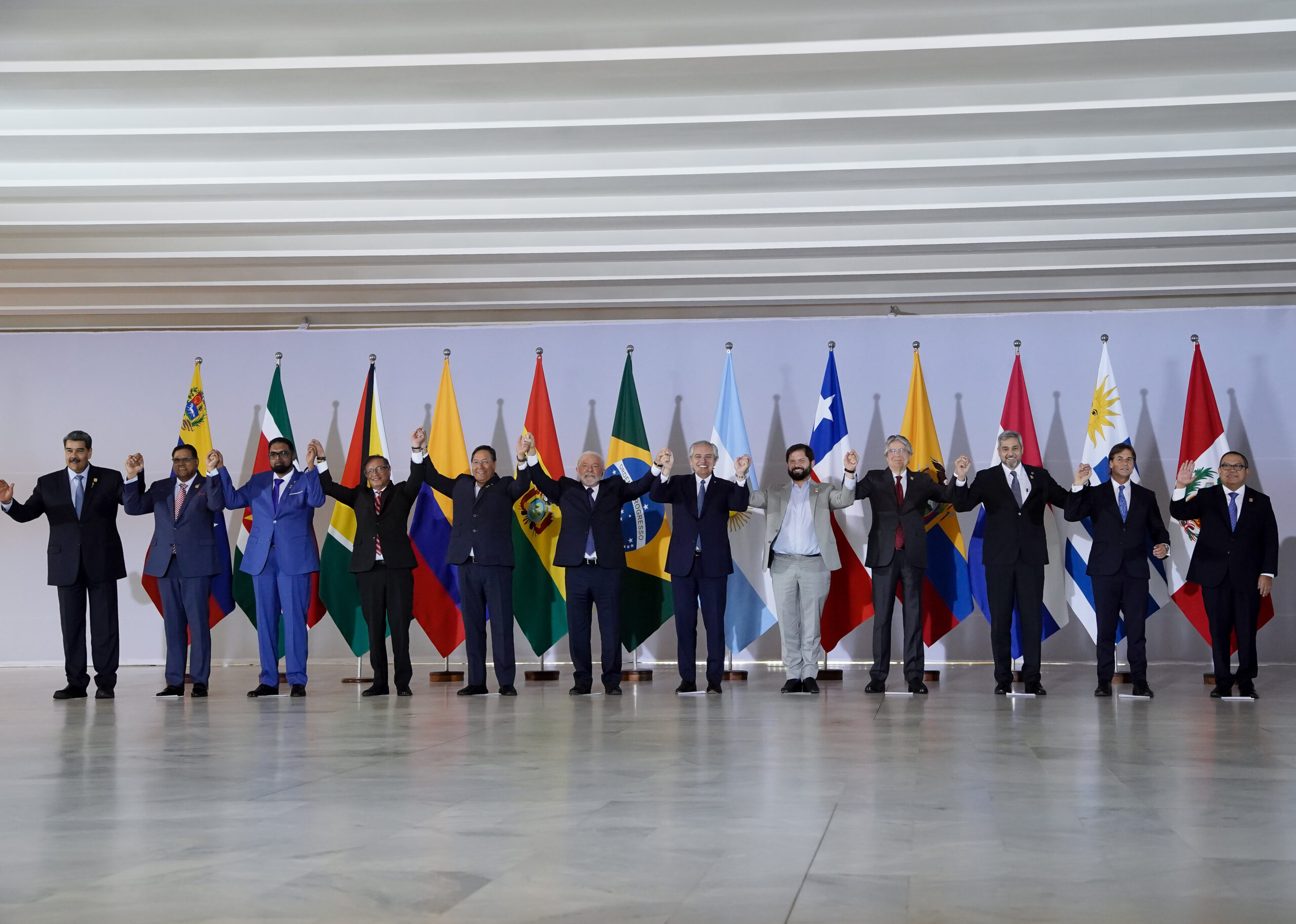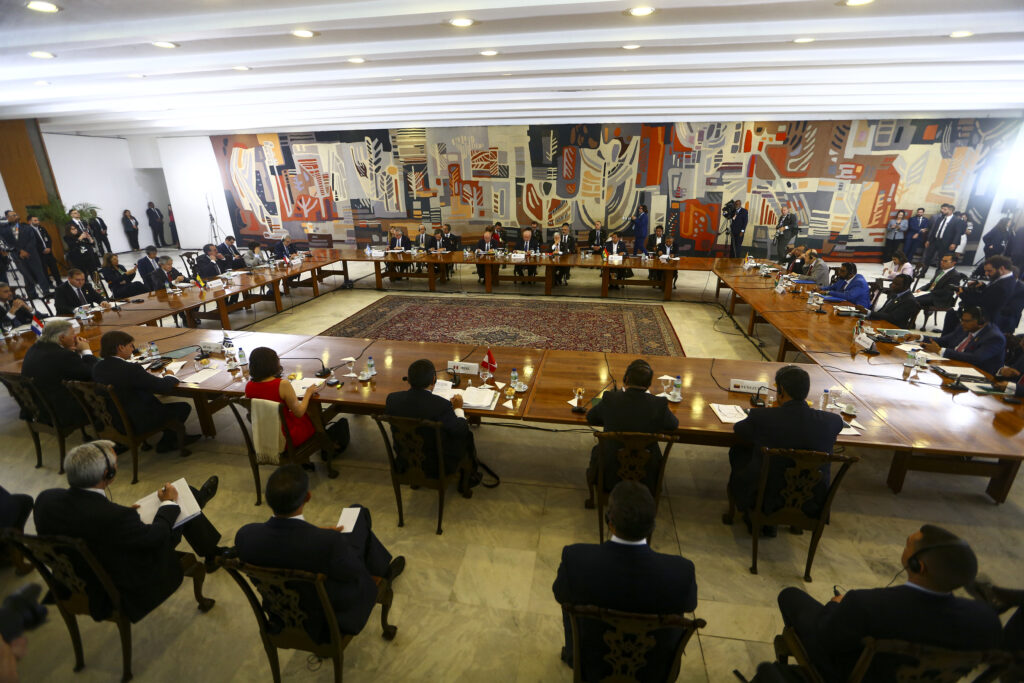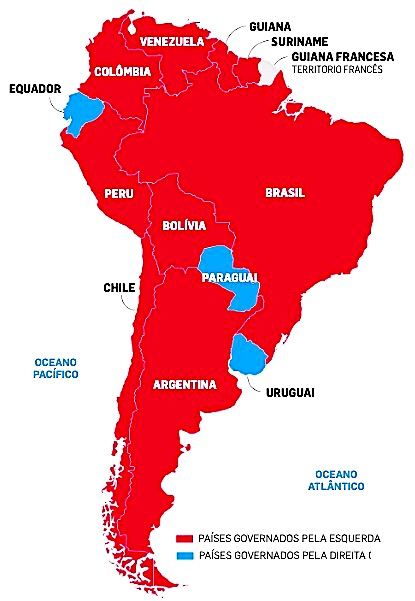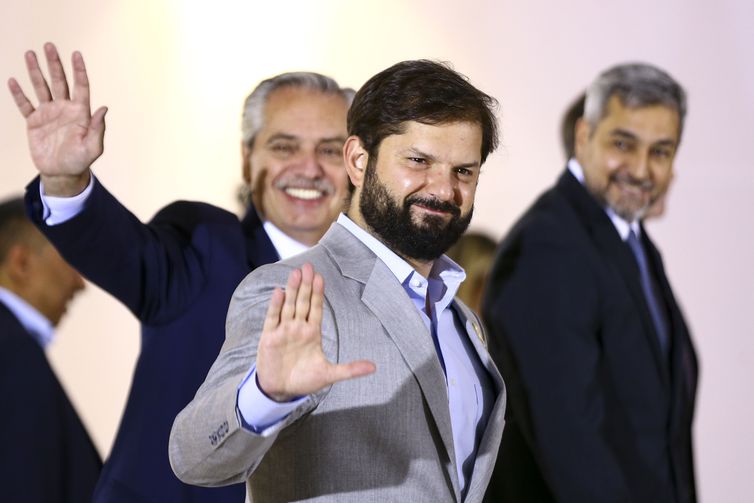
Published 5/30/2023 4:55 PM | Edited 5/31/2023 2:56 PM
After eight years away from its neighbors, Brazil returned South American integration to the center of the agenda. Just as it was the main protagonist in the separation of partners, since Jair Bolsonaro took over the government, immediately breaking off relations with Venezuela and cooling off contact with leftist governments, Brazil rescues its leadership role in the challenge of building a continental bloc .
Of the 12 continental neighbors, only Peru will not send its head of state. The country has been experiencing an institutional and political crisis since the then president, Pedro Castillo, was removed from office and arrested in December of last year. In place of Dina Boluarte, deputy of Castillo, comes the president of the Council of Ministers, Alberto Otárola.
By the way, the Peruvian crisis is one more that spread across the continent and can be discussed at the summit. Political and economic instability affects virtually all countries in the subcontinent, and bilateral meetings can be held to discuss specific issues between countries.
The only one is Prosul
In recent years, South America has experienced a second progressive wave, with the election of nine leftist presidents, among 12 countries, culminating in the inauguration of President Lula. Despite this, due to lack of leadership and articulation, no multilateral organization was activated as a forum to discuss common problems. The Union of South American Nations (Unasur), created in 2008, had this intention, but it has been disabled since Bolsonaro came to power in 2019.
The then president saw the entity as a bloc of left-wing governments, and joined the joint effort between Colombia and Chile for the creation of Prosul, a forum for countries governed by the right, which came to power in the middle of the last decade.
In this way, Lula’s initiative to visit neighbors right at the beginning of his government, to assemble a regional summit, and even to foresee a meeting of Amazonian countries, in August, shows that the page has been turned and a new cycle for South America begins. .
Lula’s maturity also proposes to advance in South American integration in a more pragmatic way, avoiding the risk of ideologization that previously contaminated the process. Everyone, left or right governments, is interested in a strong block in defense of their interests. And not just for current governments, but for the future. Lula takes aim at the model of the European Union, pointing to the adoption of even a common currency on the continent as a dream.
That is why it is so important to bring together all the presidents, with their differences, to deal with common issues. Only from this paradigm, it is possible to think of an institutional design of a multilateral entity capable of representing everyone.
As the secretary for Latin America and the Caribbean at the Itamaraty, ambassador Gisela Padovan, explained when presenting the agenda for the summit meeting: “We are aware that there are differences in vision between the various countries, ideological differences, and, for that very reason, We consider it a start: that countries sit down at the table and dialogue, seek common ground to resume this very important movement.”

common schedules
Today, more than discussing whether a government should focus on fiscal adjustment or social spending, the main concern is with the low growth scenario in all countries. Another common element is the difficulty of many governments with their parliamentary base.
It is not just Brazil, which faces the difficulty of building a correlation of forces to support it in Congress. The political dispute between a progressive government and a mostly conservative parliament makes it difficult to implement public policies promised during the election campaign.
Lula makes a point of leaving the agenda for the meeting open. But it will present to neighbors, in addition to the proposal to create an entity that represents the subcontinent, issues that are treated as a priority by the Brazilian government. One of them is the offer of economic aid mechanisms to Argentina — the second largest economy in South America, which is experiencing a severe economic crisis and hyperinflation, which compromise the stability of the continent and its ability to integrate economically. For Lula, countries that have strong commercial links with Argentina should create aid mechanisms, mainly in the form of export financing.
The reinsertion of Venezuela into the region’s diplomatic and commercial routine is another priority issue, already resolved in Brazil with the reopening of consulates. The irresponsibility of the previous government left more than 20,000 Brazilians without consular assistance. Another serious problem was the suspension of negotiations on the debt that Venezuela has with Brazil, since there was not even an ambassador for that. The disruption also hit trade and business partnerships, which plummeted from US$6 billion to just over US$1.2 billion.
The expectation, however, is that the presidents also discuss common agendas, such as the physical integration of South American countries through highways, railways and pipelines; policies to combat organized crime in border regions and convergences in relation to migratory movements in the subcontinent.

Venezuela
The first to arrive in the Brazilian capital was the president of Venezuela, Nicolás Maduro, last night. The bilateral meeting with Lula was widely publicized due to the symbolic importance of the Venezuelan government’s return to the integration debate.
Maduro’s presence, criticized by the extreme right, reveals the ideological diversity that Lula seeks to add, in a pragmatic way, demonstrating the contrast with the previous government.
Argentina
Part of the speech by Argentine Alberto Fernández was broadcast to the press. He reinforced the need to build a subcontinental integration and, saying that “we cannot accept the blockades in our region”, referring to the sanctions against Venezuela. Afterwards, however, Fernández said that democracy in Latin America is a value that must be preserved.
“The construction of democracy and human rights in Latin America is a fight that has cost many people their lives, and we cannot lose that”, says the Argentine.
Paraguay
Paraguay has a strategic agenda with Brazil, which is the sale of energy from the Itaipu hydroelectric plant, a partnership between the two countries. The agreement that provided for Brazilian exclusivity in the acquisition of surplus generation from Paraguay expired, and the binational now enters a market economy regime.
Uruguay
Uruguay, in turn, is the country most resistant to agreements within the Mercosur framework. The southern neighbor defends the freedom to close bilateral partnerships, without the constraints of the economic bloc. However, if the position of the other partners prevails, Uruguay will need to comply with Mercosur rules to enjoy the advantages.
The current government of Luis Lacalle Poul also maintains a critical stance against the Venezuelan government and has rejected the resumption of regional integration institutions such as the Union of South American Nations (UNASUR). He criticized statements by the Brazilian government. “We need to stop this tendency to create organizations, let’s take action”, he declared. “I was surprised when [Lula] He said that what happens in Venezuela is a narrative”.

Chile
Chile, which has always appeared to be the swan of prosperity and stability in South America, has gone through enormous social turmoil and is facing a second attempt to build a new Constitution. The government of Gabriel Boric failed in its attempt to enact a Charter drawn up by a mostly left-wing Constituent Assembly. The country’s population rejected the project, and a new Constituent Assembly was elected, this time composed mostly of conservatives.
Boric said he is happy that Venezuela is returning to multilateral forums because he believes that these are spaces where problems are resolved. “That, however, cannot mean turning a blind eye to issues that have been important to us from the beginning,” he said, expressing disagreement with Lula over the situation of Venezuelans. Chile is one of the countries that receive the most immigrants from that country.
Another divergence with other governments is the reform of Unasur. Like Lacalle Pou, Boric also resists a block that prevents him from bilateral agreements. Chile has made agreements with China and the US outside the scope of Mercosur and prefers to maintain this autonomy.
Colombia
Colombia is going through a period of changes in government. With difficulties in fulfilling his progressive agenda of labor, social security and health reforms, left-wing president Gustavo Petro dismissed seven ministers in April, amid the most serious political crisis of his term, which began in August last year. .
Petro defended, upon arriving at the Itamaraty Palace, more concrete actions by the countries of South America in the sense of promoting regional integration, and highlighted the need to advance discussions regarding the climate crisis. He was the only head of state who spoke to the press before the start of the summit meeting taking place in Brasilia.
In a quick interview in the Itamaraty lobby, Petro declared that it is necessary to “seek consensus, a unified voice in South America”. In his assessment, the discourses converge towards continental integration, but concrete measures are still lacking”.
He also mentioned as a priority the integration of the countries’ infrastructures, in particular “the electrical interconnection, to overcome the world’s problems”.
The President of Colombia also highlighted that overcoming the climate emergency is one of the greatest global challenges. “This is the first big leap forward, a real fight for what is humanity’s main problem.”
Ecuador
Ecuador is going through a recent institutional crisis. Two weeks ago, President Guillermo Lasso dissolved the National Assembly to prevent the impeachment process against his government from moving forward. With that, he was obliged to call presidential elections for August 20, in a movement called “crossed death”.
Until the new president takes office, Lasso will govern Ecuador by decree, which is viewed with great suspicion by civil society. It is in this situation, without having decided yet whether he will try to remain in office through elections, that he will come to Brasília.
Bolivia
Taking advantage of a period of political and institutional stability, Bolivia will come to Brazil with a pragmatic agenda, structured around the exploitation of mineral resources, one of the country’s main economic activities. With the decline in natural gas production, which had Brazil as its main buyer, the country is seeking partnerships to expand the extraction of valuable metals for the energy transition process, such as lithium, used in the manufacture of batteries.
In common with other neighbors, Bolivia shares an interest in building, with Brazil, an infrastructure that expands the logistical integration of South America, with the expansion of the bioceanic corridor, a road network that links the Atlantic to the Pacific. Physical integration can increase the export of agricultural and mineral commodities from the region.
Guiana e Suriname
Guyana and Suriname have little weight in the economy and politics of South America. But they gained special prominence, in recent months, for exploring oil on the Atlantic coast. Petrobras also found similar conditions on the so-called equatorial margin, but faces environmental resistance.
The experiences and research of the two small countries in the extreme north of the subcontinent are being evaluated and can be shared by the two presidents at the meeting in Brasilia.
Source: vermelho.org.br

